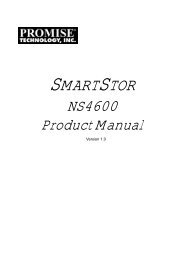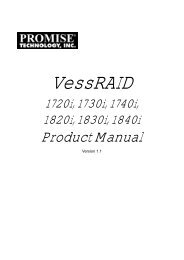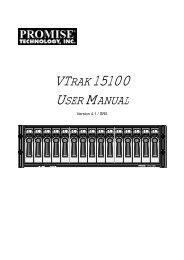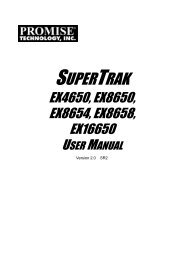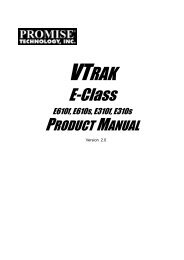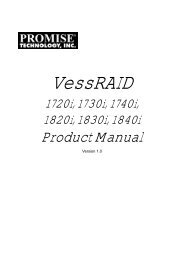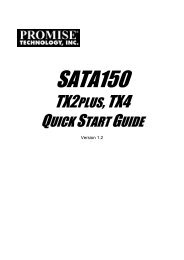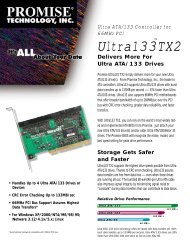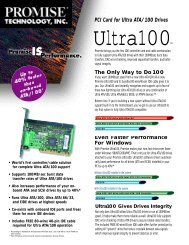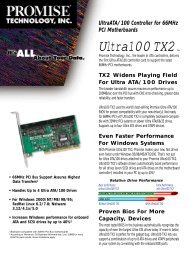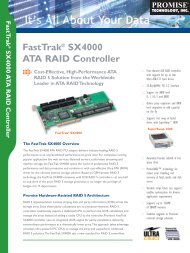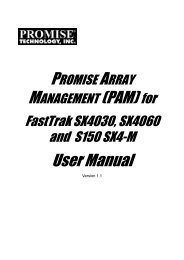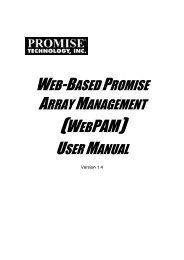WebPAM User v1.5 - Promise Technology, Inc.
WebPAM User v1.5 - Promise Technology, Inc.
WebPAM User v1.5 - Promise Technology, Inc.
You also want an ePaper? Increase the reach of your titles
YUMPU automatically turns print PDFs into web optimized ePapers that Google loves.
RAID 1 – Mirror<br />
91<br />
Chapter 6: <strong>Technology</strong> Background<br />
When a logical drive is mirrored, identical data is written to a pair of disk drives,<br />
while reads are performed in parallel. The reads are performed using elevator<br />
seek and load balancing techniques where the workload is distributed in the most<br />
efficient manner. Whichever drive is not busy and is positioned closer to the data<br />
will be accessed first.<br />
With RAID 1, if one disk drive fails or has errors, the other mirrored disk drive<br />
continues to function. This is called Fault Tolerance. Moreover, if a spare disk<br />
drive is present, the spare drive will be used as the replacement drive and data<br />
will begin to be mirrored to it from the remaining good drive.<br />
Figure 2. RAID 1 Mirrors identical data to two drives<br />
1<br />
2<br />
3<br />
4<br />
Data Mirror<br />
Disk Drives<br />
Due to the data redundancy of mirroring, the capacity of the logical drive is only<br />
the size of the smallest disk drive. For example, two 100GB disk drives which<br />
have a combined capacity of 200GB instead would have 100GB of usable<br />
storage when set up in a mirrored logical drive. Similar to RAID 0 striping, if disk<br />
drives of different capacities are used, there will also be unused capacity on the<br />
larger drive.<br />
RAID 1 logical drives on FastTrak consist of two disk drives.<br />
1<br />
2<br />
3<br />
4



